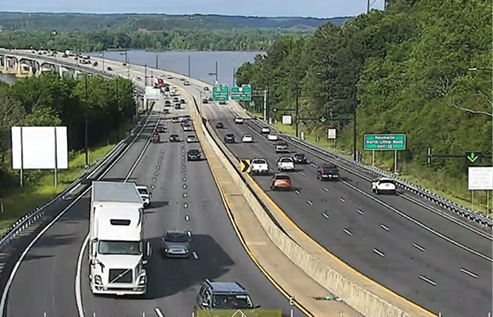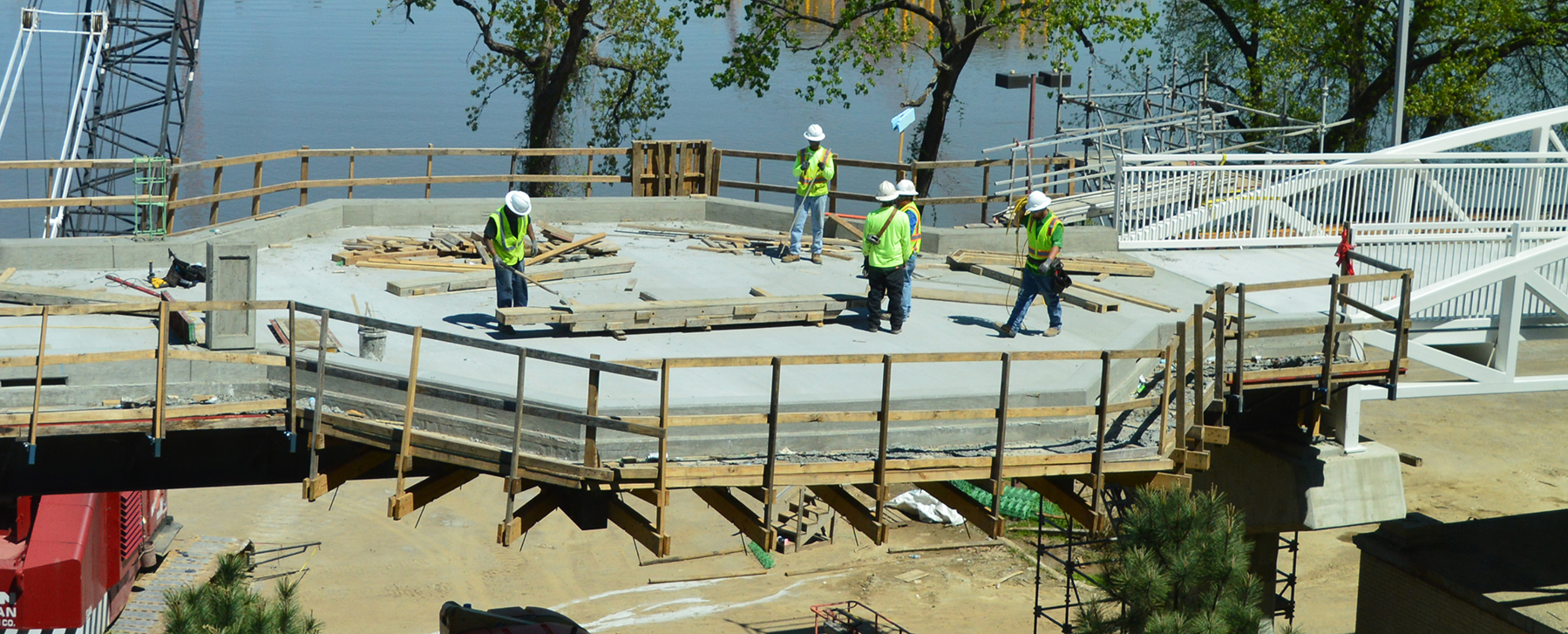7.
Embrace new technologies and best practices to optimize mobility and protect the environment.
The number of new technologies in the transportation sector is rapidly growing. At the same time, innovative intersection designs provide opportunities to improve traffic flow while protecting and enhancing accessibility for pedestrians, bikers and transit users.
Most new cars now detect pedestrians, correct steering when one drifts out of its lane, automatically brake, and can alert drivers of a potential collision and to take a different route. Traffic signals are coordinated and adjust timing to traffic and will soon communicate with vehicles (N2X technology). These are just some of the developing innovations that will lead to a safer, greener, and smarter transportation system during the plan’s time horizon.

Metroplan is partnering with ARDOT to develop an ITS/Smart Streets Plan. ARDOT has already provided congestion relief with a managed lanes improvement on I-430 across the Arkansas River. Metroplan is cooperating with these efforts, and also playing a localized role by encouraging member city and county governments to improve street connectivity, intersection design, and pedestrian/bike/transit accessibility. Metroplan’s Best Practices newsletter advances these critical planning goals.
Some of the newest opportunities may lie in sustainability efforts to reduce emissions and improve livability. Carbon forestry and landscaping can be developed on public rights-of-way and other public lands to absorb carbon and reduce the urban “heat island” effect in future years, while improving the physical attractiveness. The City of Phoenix’s “Cool Pavement” program has successfully reduced local temperatures by several degrees simply by using an environment-friendly pavement coating. Future ideas not yet anticipated here will undoubtedly abound and a key plan goal is to embrace them.
Metroplan is developing an energy and environment innovation plan to identify these strategies for Central Arkansas.
EV Plan![]() Technology is not just impacting driver behavior; it seems that every new commercial is for an electric or alternative fuel vehicle.
Technology is not just impacting driver behavior; it seems that every new commercial is for an electric or alternative fuel vehicle.
As additional charging infrastructure is built, the percentage of vehicles that use traditional fuels (gasoline and diesel) will decrease. This will have impacts on funding, maintenance requirements, and emergency response.
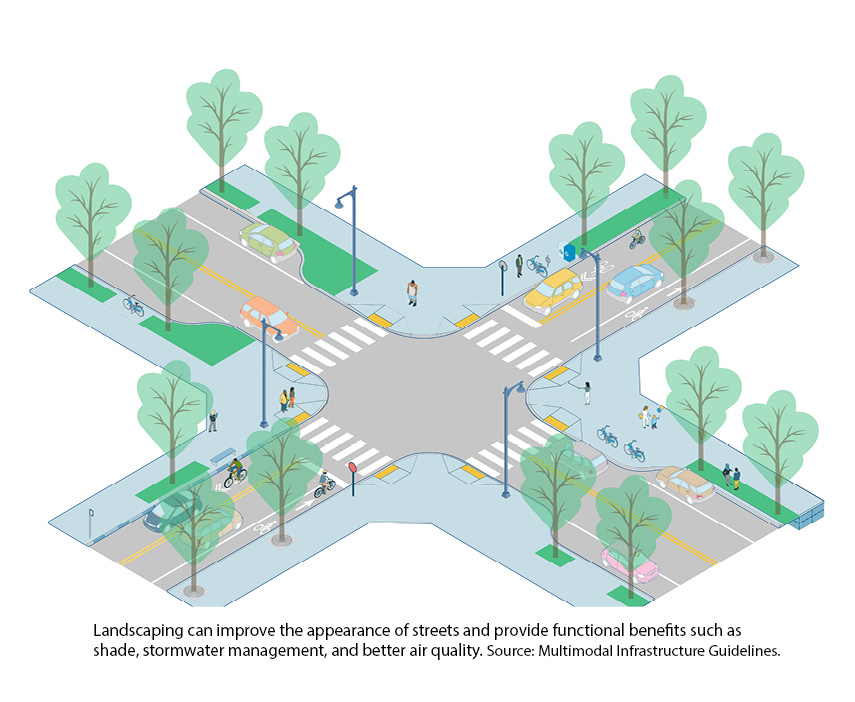
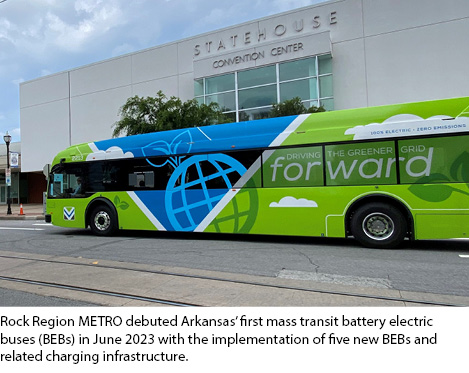
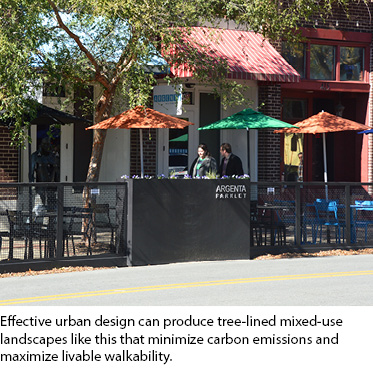
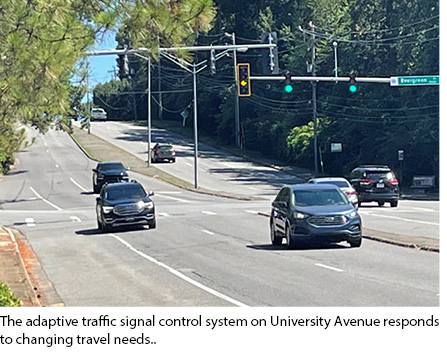
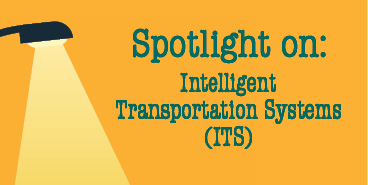
ITS technology keeps traffic moving safely and efficiently through monitoring (e.g., congestion, weather) and traveler communication (e.g., real-time electronic message boards, adaptive traffic signals, bus arrival times). ITS also has a role to play in reducing carbon emissions from cars and trucks. Our air quality improves when we spend less time idling in traffic and more time travelling at consistent speeds.
“Our nation is on the cusp of great opportunity in how we define our 21st century transportation system, one that can ensure greener communities, increased opportunity and equity, and safer streets for all Americans. The integration of technology is key as we build for the future.”
—ITS America Blueprint 2021
(The Intelligent Transportation Society of America)
ARDOT’s
Traffic Management Center
The Arkansas Department of Transportation operates a Traffic Management Center 24 hours a day and 7 days a week whose responsibility is to monitor, detect, respond and report on incidents that effect the state system. This helps clear incidents quicker, alert drivers, and improve safety. The state first managed lanes, across the I-430 Arkansas River Bridge, are also controlled by this center.
Photo credit: Arkansas Department of Transportation
